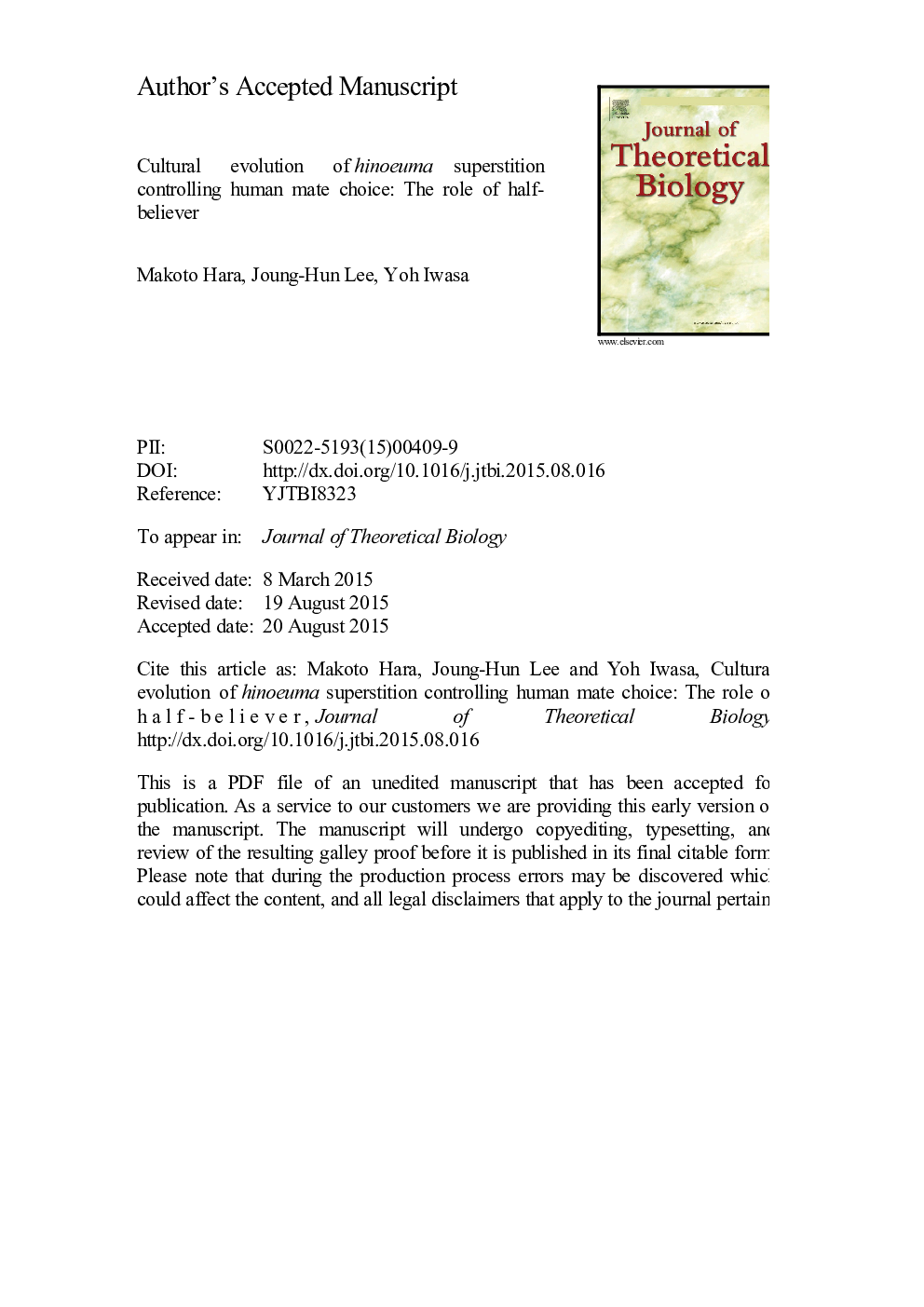| Article ID | Journal | Published Year | Pages | File Type |
|---|---|---|---|---|
| 6369464 | Journal of Theoretical Biology | 2015 | 33 Pages |
Abstract
In this study, we used a cultural dynamic model to explain the persistence of the hinoeuma superstition in traditional Japan. Men with this superstition avoid marrying women born in a hinoeuma year (or hinoeuma-women). Parents avoided childbirth during the last hinoeuma year out of the concern that their daughter would have trouble finding a husband in the future, and this resulted in a large drop in the number of babies born in 1966. A previous theoretical analysis of the hinoeuma superstition considered two alternative cultural factors: believers and nonbelievers. In the present study, we considered a third cultural factor, the half-believer. A man that is a half-believer accepts a hinoeuma-woman as his wife, but parents that are half-believers avoid childbirth during hinoeuma years. With these three cultural factors, there are two possible outcomes for the population. In the first outcome, [1] non-believers become extinct, with the population consisting of believers and half-believers; some men refuse hinoeuma-women as their mate choice, and most parents attempt to avoid childbirth during hinoeuma years. In the second outcome, [2] believers become extinct, and the remaining population consists of non-believers and half-believers; no man refuses hinoeuma-women, and some parents avoid childbirth in hinoeuma years to prevent potential harm to their daughters. If birth control fails at a steady rate, believers will become extinct eventually. The superstition is more likely to be maintained if the mother has a stronger influence on the beliefs of her children than the father.
Related Topics
Life Sciences
Agricultural and Biological Sciences
Agricultural and Biological Sciences (General)
Authors
Makoto Hara, Joung-Hun Lee, Yoh Iwasa,
